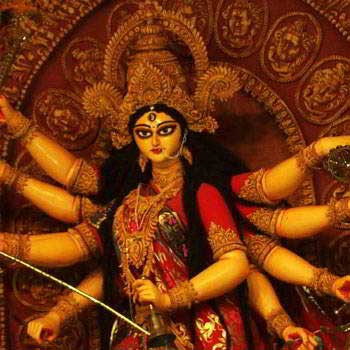Dussehra Celebrations in Mysore: A Spectacle of Tradition and Triumph
Among the various states of India, the mention of Dussehra immediately brings to mind the grand ten-day celebrations in the beautiful city of Mysore. Dussehra, also known as Vijayadashami, symbolizes the triumph of good over evil. The falls on the full moon day”Ashvinin the Hindu calendar. The first nine nights, celebrated as Navaratrimeaning nine nights), lead up to Vijayadashami. Celebrated annually during September and October in the Gregorian calendar, this major festival varies in its customs and rituals across different states. Legend has it that there was a demon named Mahisasura who disrupted the lives of ordinary people. To protect themselves, the citizens worshiped Goddess Durga, who, pleased by their devotion, slew the wicked demon. This event is commemorated during the festival, particularly in the eastern and northeastern states of India. Another legend relates to Ravana, the ten-headed king who abducted Sita, the divine consort of King Rama. Rama rescued Sita and defeated Ravana, an event remembered during the celebrations across the northern, southern, and western regions of India. In Mysore, Dussehra is celebrated as “Naada Habba”—the festival of the land. The Mysore Palace is spectacularly adorned with approximately one hundred thousand lights, and breathtaking cultural performances, rehearsed for days, are showcased. A major highlight is the procession featuring adorned elephants; the lead elephant carries the idol of Goddess Chamundeeswari, Karnataka’s revered deity. Accompanied by a multitude of artists playing musical instruments and dancing various folk dances, the procession concludes at Bannimantap, where a sacred Banni tree stands. This festival also provides an opportunity for women and young girls to dress up and reunite with friends and families over the course of the nine days. A variety of traditional foods are served during Navaratri. On the tenth day, Maha Navami, a giant effigy of King Ravana is burned, symbolizing the elimination of evil and the victory of good. Thus, the Dussehra celebration in Mysore reinforces the enduring philosophy that good always prevails over evil. What is Naada Habba in Mysore Dussehra? Naada Habba translates to "the festival of the land" in Mysore, where the city celebrates Dussehra with grandeur, cultural performances, and the iconic procession of adorned elephants. When is Mysore Dussehra celebrated? Mysore Dussehra is celebrated annually during September and October, culminating in the burning of the effigy of King Ravana on Maha Navami. What are the highlights of Mysore Dussehra? The highlights include the illuminated Mysore Palace, cultural performances, the royal procession with elephants, and the burning of the Ravana effigy symbolizing victory over evil. Is Mysore Dussehra suitable for families? Yes, Mysore Dussehra is family-friendly, offering cultural immersion, festive cheer, and opportunities to witness traditional rituals and celebrations. How can I experience Mysore Dussehra to the fullest? Plan your visit during the festival period to witness the palace illumination, attend cultural events, explore local cuisine, and participate in the vibrant festivities that celebrate Karnataka's rich cultural heritage. 
History
Celebration Details
Frequently Asked Questions (FAQs) About Mysore Dussehra